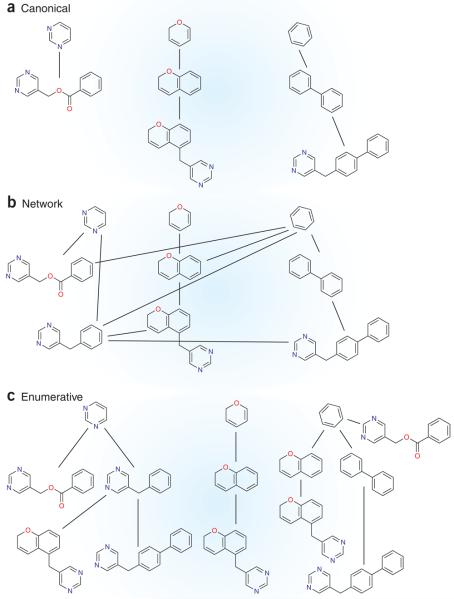Figure 1.
Depictions of scaffolds and their relationships using selected dihydrofolate reductase ligands drawn from the MDL Drug Data Report. (a) A canonically rooted tree produced by progressively pruning scaffolds to arrive at a canonical root ring as described in this paper. Note that whereas the largest scaffold in each branch contains pyrimidine, the key group required for binding, only one has pyrimidine as the canonical root ring. (b) A network of related scaffolds, where lines indicate addition of a single ring. Such networks rapidly become unwieldy as the number of scaffolds grows; the number of connections rises much more slowly in trees (a,c) than for networks. (c) Enumeratively rooted trees. Each ring in each molecule is used once as a root so that each molecule appears as many times as it has rings. This facilitates seeing patterns in the data. Here, a common pyrimidine root unites all molecules consistent with their presumed binding mode. These were rooted separately in the canonical scheme (a), obscuring the common key binding group.

